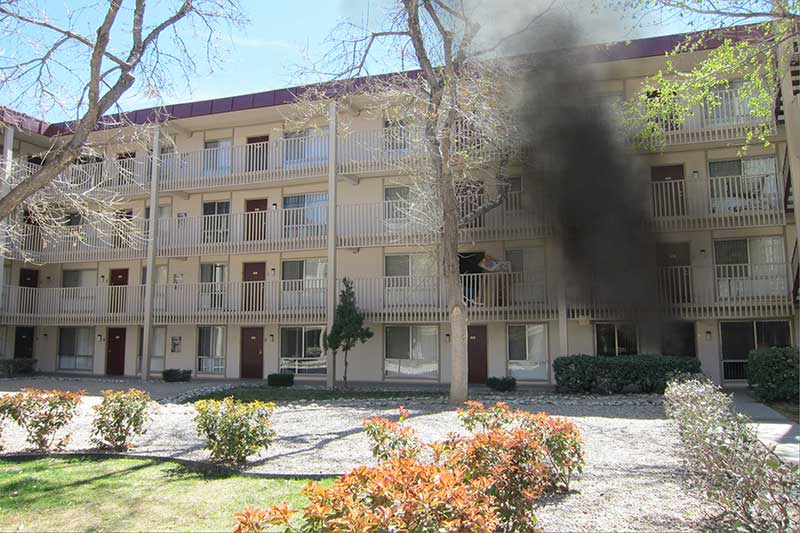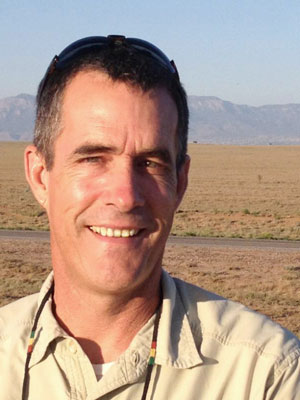
By Ted Nee
Simulations can be highly effective training tools, especially when it comes to fireground decision making.
In this month’s garden apartment fire simulation, you are the company officer on Engine 1, and will be first due at this event. You are in quarters when you receive the following dispatch: “Alarm to Engine 1t, Engine 2; Engine 3; Ladder 1; and Battalion 1, respond to 6300 Montgomery Blvd. This will be at the Woodberry Heights Apartments we have a report of a structure fire. All units responding to 6300 Montgomery Blvd switch to tactical channel 1 and acknowledge en route.”
RELATED FIREFIGHTER TRAINING
Garden Apartment Fires: No Walk in the Park
Garden Apartment and Townhouse Fires
FIREGROUND SIZE-UP FOR GARDEN APARTMENTS AND TOWNHOUSES
THE CHALLENGE OF GARDEN APARTMENT FIRES: A REPORT
Garden Apartment Fire Simulation

Tactical Considerations
The Woodberry Heights is a large four-story garden style apartment complex. Access to all of the units is from the courtyard in the center of the complex. There are four exterior staircases, one on each side of the courtyard, and two elevators, one each on the Bravo and Delta ends of the complex. The first-floor units are masonry block construction while the second through fourth floors are lightweight wood-frame construction. Built-in fire protection features include a dry standpipe adjacent to the stairs on each side of the courtyard, four occupant-use hose cabinets on each floor, as well as several alarm pull stations.
Tactical Considerations
There are several ways to approach this incident depending on the critical factors identified in the initial incident size-up. One approach would be to stretch a “garden apartment” line (a 21/2-inch line with a gated wye) into the courtyard and connect your attack line. Another approach would be to pump the standpipe connection and run your attack line off of the standpipe. Your tactical decisions should be based on the initial size-up, your departments SOGs, and staffing level.
Once you start the garden apartment simulation video, you will be prompted to pause the video and give a radio report at several key points.
The first radio transmission you will provide is a standard size-up report. This radio report should include the following elements:
- Arrival on scene
- Building area/size
- Building height (number of stories)
- Problem description
- Action being taken (assignments for the E-1 crew)
- Assume and name command
- Any resource needs
You will be prompted to pause the video and make an assignment when additional units report on scene. Practice giving assignments using the Task, Location, Objective (TLO) format. An example assignment might be: “Ladder 1 pull a second handline from Engine 1 (task), go to the first floor (location), get an “all clear” and check for fire extension (objective).”
When Battalion 1 arrives on-scene, make a command transfer using your department’s standard command transfer process (if applicable).
Formulate Conditions, Actions, Needs (C.A.N.) reports for the assigned units based on the visible conditions and information provide when prompted to do so.
Finally, have Battalion 1 give an assignment to Engine 3 using the TLO format based on the C.A.N. reports from the assigned units.
The most effective way to use the simulation is to get feedback regarding your performance (have an experienced officer or colleague critique your radio reports) and run through the simulation again, incorporating the feedback.

Ted Nee is a 36-year veteran of the fire and emergency services. He joined the Albuquerque (NM) Fire Department (AFD) in 1983. He retired from the AFD at the rank of deputy chief. After his service with the AFD Ted served as the lead command instructor and command training center coordinator for the Emergency Response Organization at Sandia National Labs in Albuquerque for nine years. Ted is a Blue Card Command type IV and V Incident Commander and a Blue Card Command Instructor. Ted is currently teaching Fire Studio 6 Essentials and Advance Simulation Concepts workshops across North America. Ted is the co-author of the Fire Engineering DVD “Fire Dynamics” along with Dan Madrzykowski of the Underwriters Laboratories Firefighter Safety Institute and Lieutenant John Ceriello of the Fire Department of New York.
MORE
Firefighter Training Simulation: Big Box Store Fire
Mid-Rise Apartment Fire Simulation

